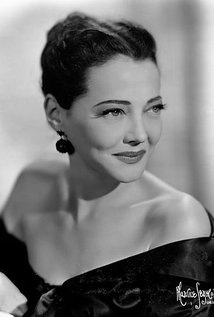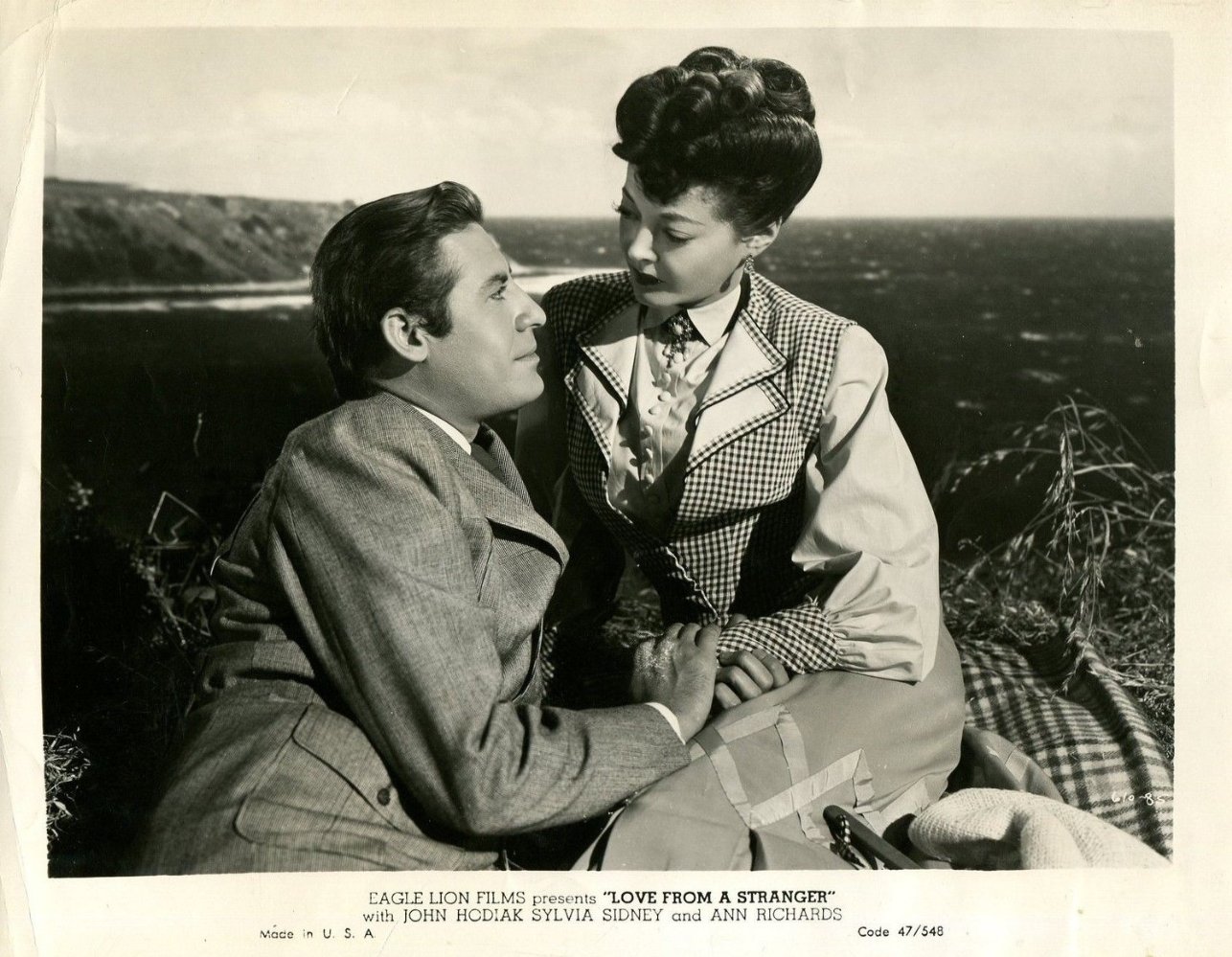
Sylvia Sidney
Birthday:
8 August 1910, The Bronx, New York City, New York, USA
Birth Name:
Sophia Kosow
Height:
159 cm
Sylvia Sidney was born in New York City, in the Bronx borough, on August 8, 1910 with the birth name of Sophia Kosow. Her father was Russian born and her mother was born in Romania. They divorced not long after her birth. Her mother subsequently remarried and Sylvia was adopted by her stepfather, Sigmund Sidney.Sylvia was a shy child and her parent...
Show more »
Sylvia Sidney was born in New York City, in the Bronx borough, on August 8, 1910 with the birth name of Sophia Kosow. Her father was Russian born and her mother was born in Romania. They divorced not long after her birth. Her mother subsequently remarried and Sylvia was adopted by her stepfather, Sigmund Sidney.Sylvia was a shy child and her parents tried to encourage her to be more outgoing and gregarious. As an early teen, Sylvia had decided that she wanted a stage career. While most parents would have looked down on such an announcement, Sylvia was encouraged to pursue the dream she had made. She was enrolled in the Theater Guild's School for Acting. Sylvia later admitted that when she decided to become a stage actress at 15, it wasn't being starstruck that occurred to her, but the expression of beauty that encompassed acting. All she wanted was to be identified with good productions. One school production was held at a Broadway theater and in the audience there was a critic from the New York Times who had nothing but rave reviews for the young Miss Sidney. On the strength of her performance in New York, Sylvia appeared in a play at the famed Poli Theater in Washington, D.C. More stage productions followed, each better than the last and it wasn't long before the film moguls were at the doorstep.Sylvia was appearing in the stage production of "Crime" when she made her first appearance on the silver screen in 1927. The film in question was "Broadway Nights" which was dealt with stage personalities of which Sylvia was one. After the film she returned to the stage where she appeared in creations which were, for the most part, forgettable.With the plays drying up, Sylvia moved to Colorado to tour with a stock company. She later returned to Broadway for a series of other plays. By 1929, Sylvia was on the big screen with "The Different Eyes" as Valerie Briand. There was another film, "Five Minutes From The Station" the following year. Sylvia was slowly leaving the stage for the production studios of Paramount. 1931 saw her appear in five films, of which, "City Streets" made her a star. She was very aware that she was replacing the great Clara Bow, who by now was suffering from severe depression. The contrast between the two actresses was very great indeed and the movie was a hit. The sad-eyed Sylvia made a tremendous impact and her screen career was off a running. Her next film was "Ladies of The Big House" later in '31. Sylvia played Kathleen Storm, part of a couple framed for a murder they didn't commit. The film made huge profits at the box-office. Co-starring with Fredric March, she then made "Merrilly We Go To Hell" in 1932. The results of the film was, again, an unqualified success. Later she made "Madame Butterfly" as geisha girl, Cho-Cho San. Here she played in one of the worst productions to date. Most critics agreed that Miss Sidney's performance saved the film from total disaster. In 1933, Sylvia starred in "Jeannie Gerhardt" in the role of the same name. Yet another doom and gloom picture, she played a girl beset with poverty and the death of her young husband before their child could be born. This turned out to be one fine performance and one fine motion picture. Sylvia received the star spotlight in 1934's "Good Dame". Despite her grand performance, the film failed miserably at the box-office, due in part to the miscast of co-star Fredric March. Sylvia scored big with the film critics with "Mary Burns", "Fugitive" (1935). Here she played a law abiding restaurant owner who falls for a big time gangster. Her performance was overshadowed by the appearance of Alan Baxter who gave an outstanding portrayal as the gangster. That film was quickly followed by "Accent On Youth" where she played Linda Brown, a young lady who was fascinated by older men. In 1938, Sylvia played in "You and Me" opposite George Raft. The film critics gave it mixed reviews and because of that it didn't do well at the box-office. Afterwards, the roles began to dissipate. Sylvia filmed "One Third of a Nation" and then wasn't seen again until "The Wagons Roll at Night"(1941).There was a four year hiatus before "Blood On The Sun". In 1946, Sylvia starred in "The Searching Wind" where she played Cassie Bowman. The movie was based on a Broadway play but it just didn't transfer well onto the big screen. The film was widely considered to be too serious and flopped with the movie fans. After 1947's "Love From A Stranger" she didn't appear again until "Les Miserables" in 1952. Only three more films followed that decade. There were no films throughout the 1960s. After appearing in a made for television movie, Sylvia returned to the big screen in "Summer Wishes, Winter Dreams". With a few movie appearances, here and there, she appeared in several made for TV flicks. In 1988, she appeared as Juno in the mega hit "Beetlejuice". Her last film for the silver screen was "Mars Attacks"! in 1996. In 1998 she was Clia in the TV series "Fantasy Island". Sylvia died on July 1, 1999, of throat cancer. To the end, she proved to be a very adept actress. Show less «
Every young actress thinks she's a tragedian -- the more tragic roles, the more you cry, the more you suffer, the better an actress you are....Show more »
Every young actress thinks she's a tragedian -- the more tragic roles, the more you cry, the more you suffer, the better an actress you are. But, when I got a little older, a little more mature, I wanted to get out of my image of "the victimized kid." I began to say, "Wait a minute. There's a thing called comedy that takes an even rougher intelligence and more technique and knowledge of the craft. Show less «
I'd be the girl of the gangster... then the sister who was bringing up the gangster... then the mother of the gangster... and they always ha...Show more »
I'd be the girl of the gangster... then the sister who was bringing up the gangster... then the mother of the gangster... and they always had me ironing somebody's shirt. Show less «
What did Hitchcock teach me? To be a puppet and not try to be creative.
What did Hitchcock teach me? To be a puppet and not try to be creative.
Paramount paid me by the tear.
Paramount paid me by the tear.
Prima donnas in anything are bad... Having a child was a great leveling agent. Those babies couldn't care less that their parents were famou...Show more »
Prima donnas in anything are bad... Having a child was a great leveling agent. Those babies couldn't care less that their parents were famous. Show less «
Women who try to hide their age just call attention to it. Why lie about it? I don't feel any younger... I don't look any younger. Somebody ...Show more »
Women who try to hide their age just call attention to it. Why lie about it? I don't feel any younger... I don't look any younger. Somebody finds out about your real age eventually. It's easier to be frank about it... I've enjoyed every age in my life. I've never wanted to go back. Show less «
What's the use of talking about a favorite role if you can't get it... The role you're doing ought to be your favorite. If you don't like a ...Show more »
What's the use of talking about a favorite role if you can't get it... The role you're doing ought to be your favorite. If you don't like a part it's probably because you've a feeling of inadequacy about it. Show less «
Hollywood! It's like an old chair - if it's useful, keep it; if not, give it to Goodwill.
Hollywood! It's like an old chair - if it's useful, keep it; if not, give it to Goodwill.
Fredric March had the reputation of being a ladies man. We made two pictures together, Merrily We Go to Hell (1932) and Good Dame (1934). Bu...Show more »
Fredric March had the reputation of being a ladies man. We made two pictures together, Merrily We Go to Hell (1932) and Good Dame (1934). But he never laid a hand on me, never made a pass at me! Freddie was happily married. He'd tease me by saying, "Look at those boobs!" or "Look at that toosh!". But it was all in fun. Show less «
[on realizing she could refuse unsuitable roles] When I realized I didn't have to, I became a bitch on wheels.
[on realizing she could refuse unsuitable roles] When I realized I didn't have to, I became a bitch on wheels.
[on her unhappy experience working with William Wyler] (He) made me feel so inadequate. More than anybody else, I think, he was responsible ...Show more »
[on her unhappy experience working with William Wyler] (He) made me feel so inadequate. More than anybody else, I think, he was responsible for sending me back to the stage to try to regain my security as an actress. Show less «
NEXT PAGE

Grandma Florence Norris

Juno

Aunt Marion
















